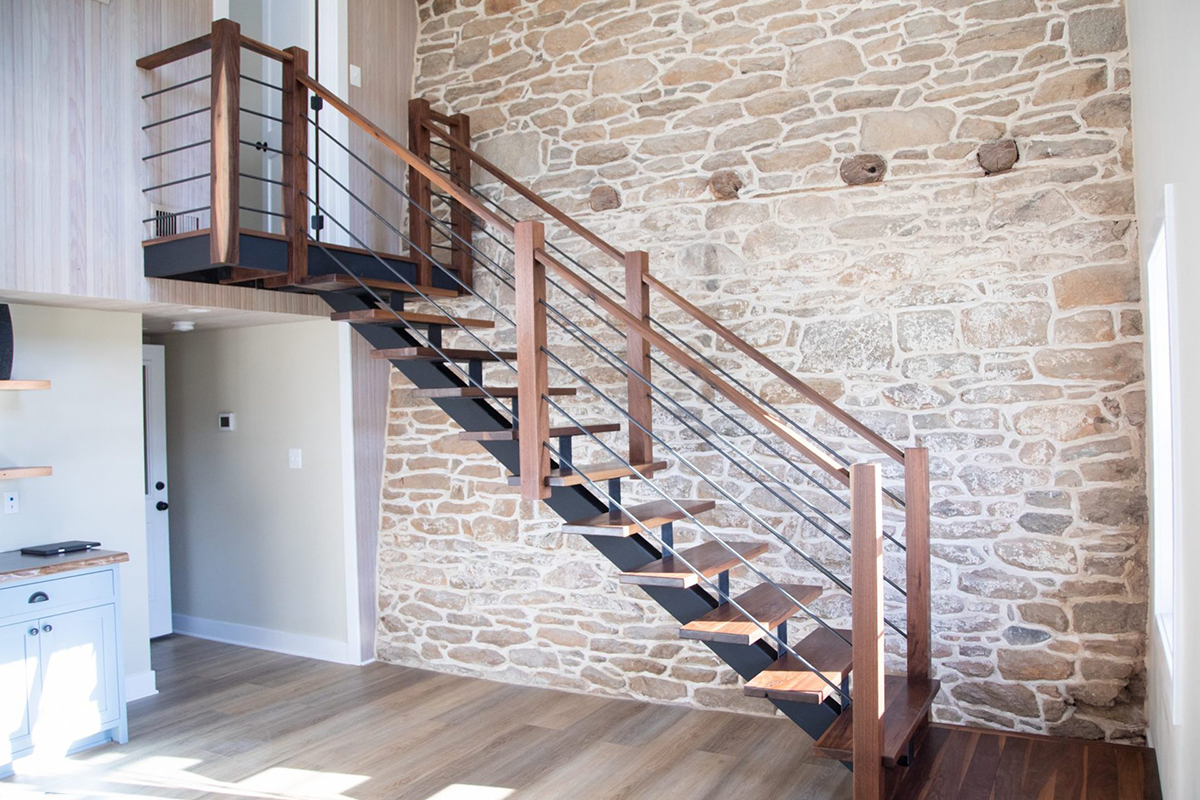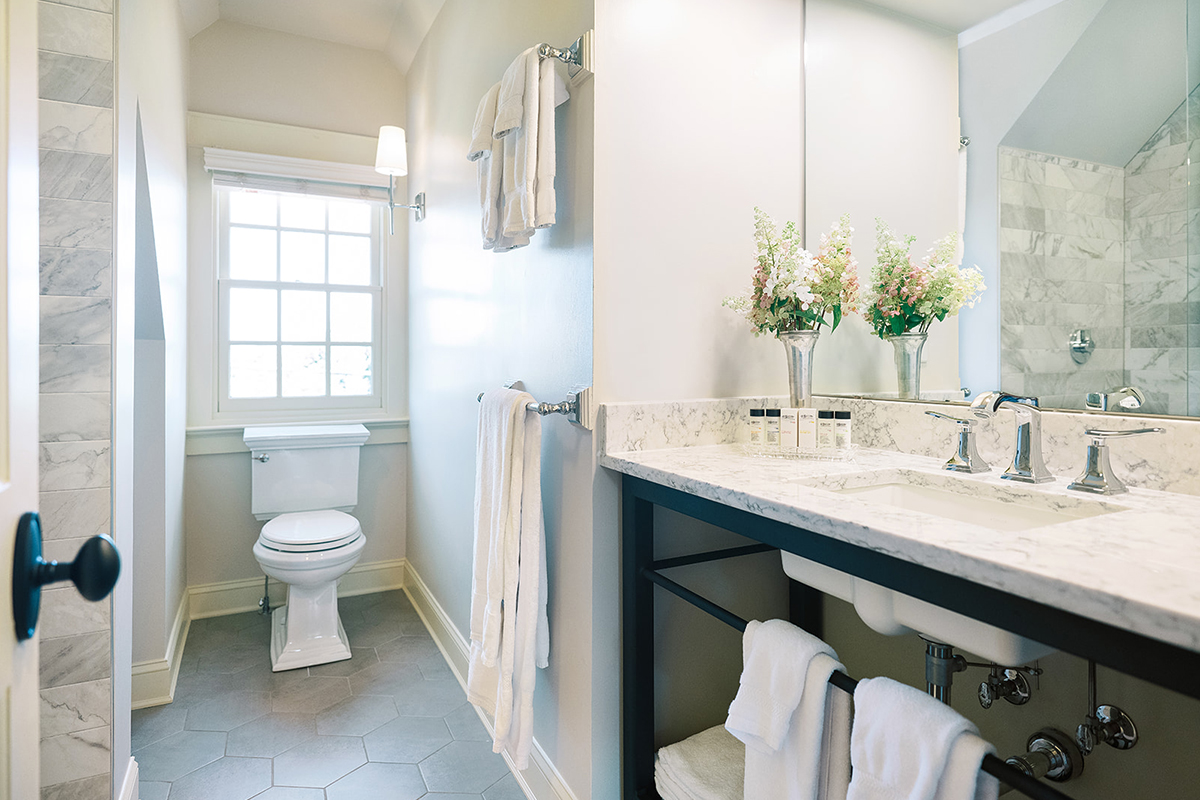 Historic homeowners are a special breed. We love the quirky beauty that makes our homes unique. The charm and elegance are hard to match. But it’s not always easy or convenient. Many historic residences lack the convenient features of newer homes and take plenty of thoughtful work to upgrade. As historic homeowners, we want to enjoy our home’s lovely vintage charms. We also want them to be comfortable, functional and tapped into today’s smart home technology. How can we add the latest amenities without sacrificing character? One of the most important steps is finding a contractor who understands your home’s history and can offer creative solutions for bringing it into the 21st century.
Historic homeowners are a special breed. We love the quirky beauty that makes our homes unique. The charm and elegance are hard to match. But it’s not always easy or convenient. Many historic residences lack the convenient features of newer homes and take plenty of thoughtful work to upgrade. As historic homeowners, we want to enjoy our home’s lovely vintage charms. We also want them to be comfortable, functional and tapped into today’s smart home technology. How can we add the latest amenities without sacrificing character? One of the most important steps is finding a contractor who understands your home’s history and can offer creative solutions for bringing it into the 21st century.
1. Layout and Design
People lived differently in past centuries. Older homes often mean smaller spaces, low ceilings, tight stairways and lack of closet space. If you’re creative and flexible, you can keep your home’s character while providing the space and layout your family needs. Custom cabinetry can help with storage needs. In some cases, your contractor can open up a room. However, knocking down walls isn’t always straightforward or structurally appropriate. That’s why working with a historic restoration specialist who understands the structure and offers solutions to create space while preserving structural integrity is essential. Most of us also want to remain sensitive to our home’s aesthetic, enjoying rather than destroying the quirky elements that make our historic home unique.
2. Kitchens and Bathrooms
Upgrading aging kitchens and bathrooms is among the elements that make your home genuinely liveable. Clients are generally willing to spend a little more on them for comfort, convenience and aesthetics. Remodeling kitchens and bathrooms in historic homes usually mean lots of custom cabinetry tailored to your space and require an experienced contractor with a keen eye and creativity.
3. Energy Efficiency
Older homes tend to be drafty. This is often related to under-insulation and inefficient windows. Talk with your contractor about boosting insulation in walls, attics and floors. It can save you money on heating and cooling in the long run and make your house more comfortable. Repairing windows with historically sensitive methods and materials and adding storm windows can also boost energy efficiency.
4. Heating and Cooling
Since historic homes were built before the advent of central heat and air, keeping them warm in winter and cool in summer can be challenging. Your contractor should offer solutions to heat them safely and effectively. Ductless HVAC systems can help keep your home comfy and cozy without requiring major ductwork. Radiant flooring installed under antique floors is another popular heating solution.
Can My Historic Home Be a Smart Home Too?
Can I create a 21st-century smart home in a 19th-century structure? Absolutely! Outdated wiring limits access to modern technology, so the first step is upgrading your outlets and wiring. It’s an investment that will pay off in terms of safety and access to contemporary technology. After remodeling, smart light bulbs, switches, blinds, and other features have all become commonplace in historic homes. Once the wiring is upgraded, you can add contemporary appliances compatible with innovative technology and explore wireless networks for internet connectivity.
Updating Your Historic Home: Keeping The Charm
 One of our top tips for updating a historic home is to preserve the original features whenever possible. Your home’s original features are very likely what made you fall in love with it in the first place. Those unique features are a significant part of its beauty and charm. Protecting your home’s integrity means repairing windows, moldings, masonry trim and other features with historically accurate techniques and materials. You can also consider refinishing or salvaging original flooring and repurposing old doors, beams and other features. This is why choosing the right contractor is key. A historic restoration specialist should be able to offer creative solutions and fabulous ideas on preserving and repurposing vintage elements, helping you determine what to hold onto and what to let go.
One of our top tips for updating a historic home is to preserve the original features whenever possible. Your home’s original features are very likely what made you fall in love with it in the first place. Those unique features are a significant part of its beauty and charm. Protecting your home’s integrity means repairing windows, moldings, masonry trim and other features with historically accurate techniques and materials. You can also consider refinishing or salvaging original flooring and repurposing old doors, beams and other features. This is why choosing the right contractor is key. A historic restoration specialist should be able to offer creative solutions and fabulous ideas on preserving and repurposing vintage elements, helping you determine what to hold onto and what to let go.
A final tip is managing your expectations as a historic homeowner. It’s entirely doable to add contemporary conveniences. When you buy a historic home, you may give up a perfect floor plan and all the latest bells and whistles in exchange for a unique and beautiful atmosphere. Carpenter Beach Construction has the experience, skills and vision to help you achieve the best of both worlds: tapping into historic charm in your one-of-a-kind home while making your space functional and comfortable for your family.


 Carpenter Beach Construction
Carpenter Beach Construction Local Wood
Local Wood Premiere Electrical Services
Premiere Electrical Services Beach Carpenter Properties
Beach Carpenter Properties